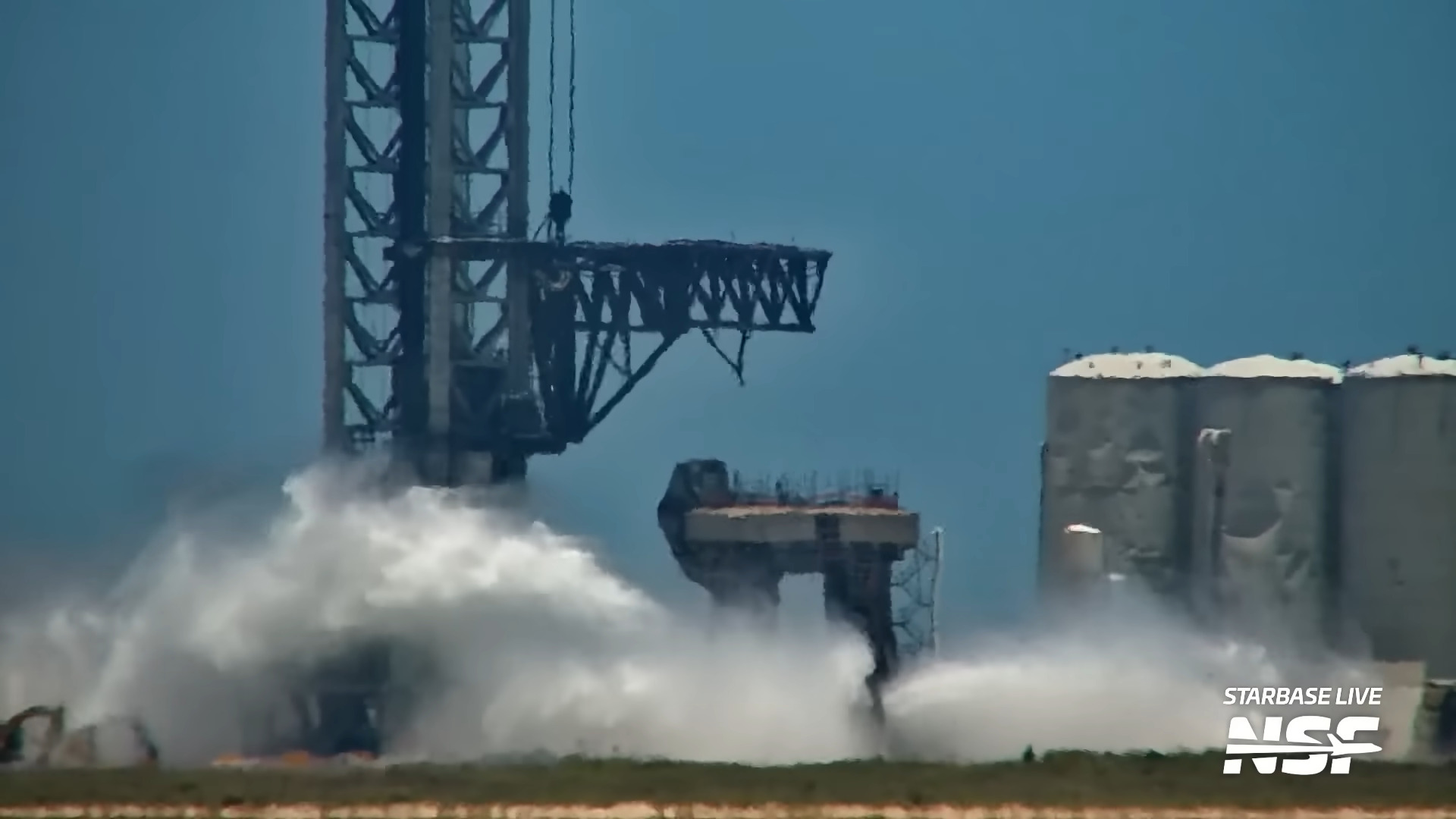The first test of the Starship in real conditions had heavily damaged the SpaceX launch pad. For the next test, a wall of water is planned. It was tested mid-July.
It is not yet known exactly when the new test of the Starship rocket in its full version will take place, but we now have a good overview of the modifications made to the launch pad to resist the ignition of the engines. A video shot by NASASpaceflight on July 18 indeed shows a partial test of a “wall of water” under the concrete base on which the launcher rests before takeoff.
This experiment, which probably did not mobilize the full power of the jets installed by SpaceX around the launch area, lasts a few seconds and projects several hundred thousand liters of water under the support. This liquid wall rises to a few tens of meters in height and falls largely around the launch pad. This deluge system, tested for the first time for the benefit of the Starship, should be followed by other tests.
Protect the launch pad during takeoff
This wall of water is part of the changes made by SpaceX since the first test in real conditions of the Starship, this spring. According to a comment by Elon Musk on June 24, reported by Space.com, the American aerospace company has made more than a thousand corrections in preparation for the next flight. Besides the craft itself, fixes have also been made to the base itself.
This wall of water is one of them. Its role is to contain the extreme heat given off by the 33 Raptor rocket engines that sit beneath the Super Heavy, the nickname given to the Starship’s main stage. The upper stage, which bears the same name as the rocket, also has 6 Raptor rocket engines, but it is not necessary to provide the same protections when they are on: these are only activated in flight , in the upper atmosphere, far from everything.
The deluge of water is a usual feature of launching platforms. In addition to absorbing the heat caused by the start of the propulsion (the intensity of the flames also vaporizes part of this liquid mass, transforming it into an immense white plume), this wall serves as an acoustic rampart. Starting the engines generates a shock wave which is likely to damage both the launcher and the launch pad.
Another change that Elon Musk mentioned at the end of June: the consolidation of the base on which the Starship rests. The SpaceX founder indicated that nearly 1,000 cubic meters of high-strength reinforced concrete were poured over the support. This had suffered considerable damage during the very first test on April 20. Debris had been thrown very far, marking the spirits and questioning the way of doing things for the American company.
The water walls are not the only systems that can be found on a launch pad to supervise the take-off of a launcher – and avoid partial or total destruction of the installations on each flight. You can come across flues, sorts of tunnels whose role is to direct and evacuate rocket engine jets. There are, for example, on the launch pad of Ariane 6. You can also see deflectors, which also serve to collect and channel the propulsion.
Surprisingly, these various elements were absent during the very first test of the Starship, despite the now significant experience that SpaceX has accumulated in aerospace. This has partly served the company, which had to refurbish its launch platform, and which must now deal with environmental groups, unhappy that the test organized in April was obviously not sufficiently secure.
Several weaknesses in the design of the Starship were also identified during the flight, which today concerns NASA. Internally, we wonder if SpaceX will be able to deliver a functional rocket on time, reliable and fully tested. In principle, the Starship must be mobilized at the end of 2025 to deposit astronauts on the Moon, within the framework of the Artemis III mission. The success of the second test, expected this summer, will largely determine the rest of the calendar.
Subscribe for free to Artificials, our AI newsletter, designed by AIs, verified by Numerama!
